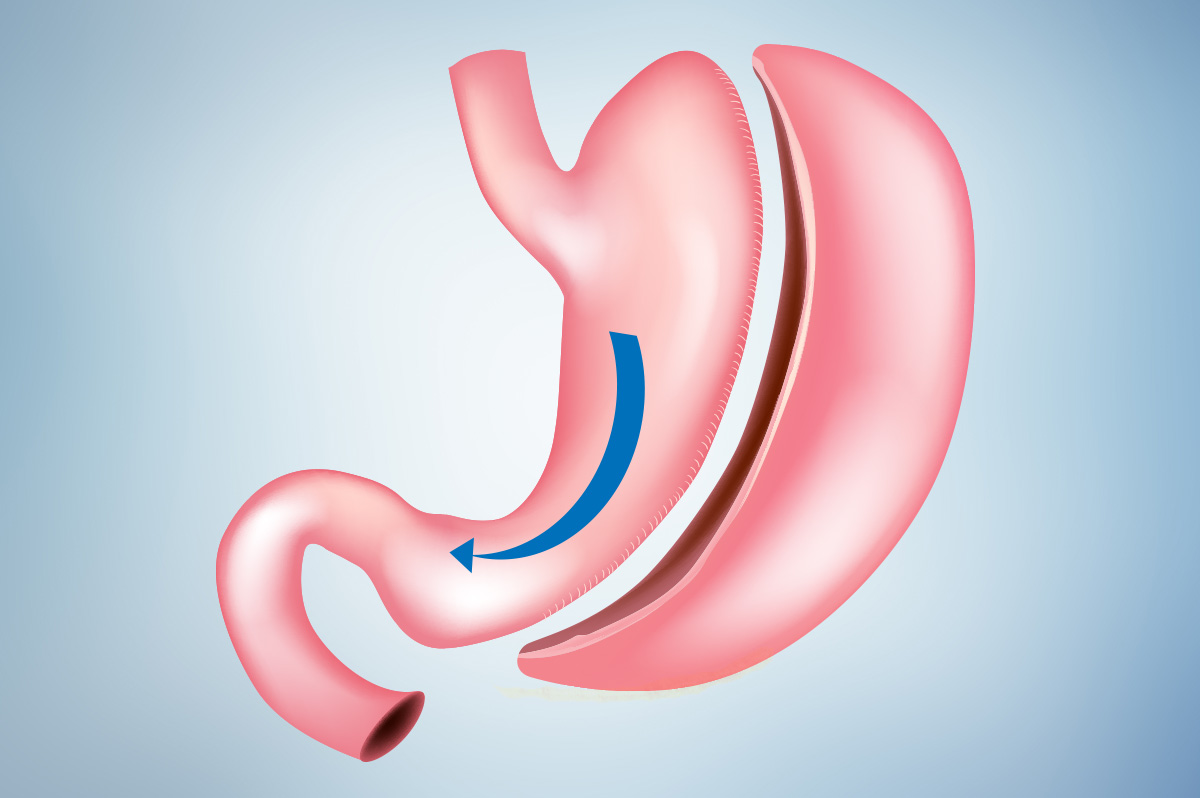
Skip the Waiting Room!
Make an Appointment in Advance
We have up-to-date programmes, contact details and allow you to make appointments online.
What is Gastric Sleeve Gastrectomy?
One of the most common surgical interventions today sleeve gastrectomy and commonly known as "stomach reduction surgery", as it is known.
In sleeve gastrectomy, the stomach is turned into a thin long tube like a banana. Laparoscopically, that is, with the closed surgery method, 80 per cent of the stomach is cut out. Thus, the food intake of the stomach is restricted. In addition, sleeve gastrectomy surgery has the effect of reducing food absorption, albeit at a very low level.
The appetite of those who have sleeve gastrectomy surgery decreases. In addition, insulin resistance is broken even before weight loss.
Sleeve gastrectomy surgery is performed in an average of 1.5 hours. Since the outlet and inlet parts of the stomach are preserved and the continuity in the digestive system is maintained, the risks after sleeve gastrectomy surgery are low and some unwanted side effects are reported to be very low.
Today, the most common stomach reduction surgery with proven effectiveness and low risk rates is "sleeve gastrectomy". With a 15-year history, the name of sleeve gastrectomy in medicine is "sleeve gastrectomy". The other type of stomach reduction surgery applied today is 'gastric bypass' surgery. However, gastric bypass is preferred only in special cases; In cases where Type 2 diabetes is at the forefront and insulin use is old and especially in people with very high BMI, gastric bypass method may be the first choice of surgery.
Those who have sleeve gastrectomy surgery must meet the following conditions:
- Those with a body mass index above 40 kg/m² (morbidly obese, i.e. severely obese).
- Those with a BMI between 35-40 and have problems such as type 2 diabetes, hypertension, sleep apnoea due to obesity are also considered morbidly obese and may need stomach reduction surgery.
In addition, surgery can be performed with the decision of the obesity doctor in patients with "new" type 2 diabetes and metabolic disorders due to obesity and with a BMI between 30 and 35.
Obesity surgeries are not performed for aesthetic purposes, that is, to make the person look thinner.
Sleeve gastrectomy, i.e. stomach reduction surgery, is performed on people between the ages of 18-65. In order for a person to be a suitable candidate for gastric surgery, the Body Mass Index (BMI) values determined by the World Health Organisation must be 35 and above.
Persons under 18 years of age The degree of obesity and the presence of the above-mentioned diseases are important for the treatment of obesity, and parental consent is required in addition to the physician's decision.
Persons over 65 years of age The health condition and the necessity of the operation (the person's weight-related problems and the problems experienced) are evaluated.
Yes, bariatric surgery is often effective in combination with lifestyle changes. This may include dietary changes, exercise and a review of eating habits.
Do you want to get advice from doctors?
Contact Us Now
We will contact you immediately. Within 24 hours we provide immediate feedback.

